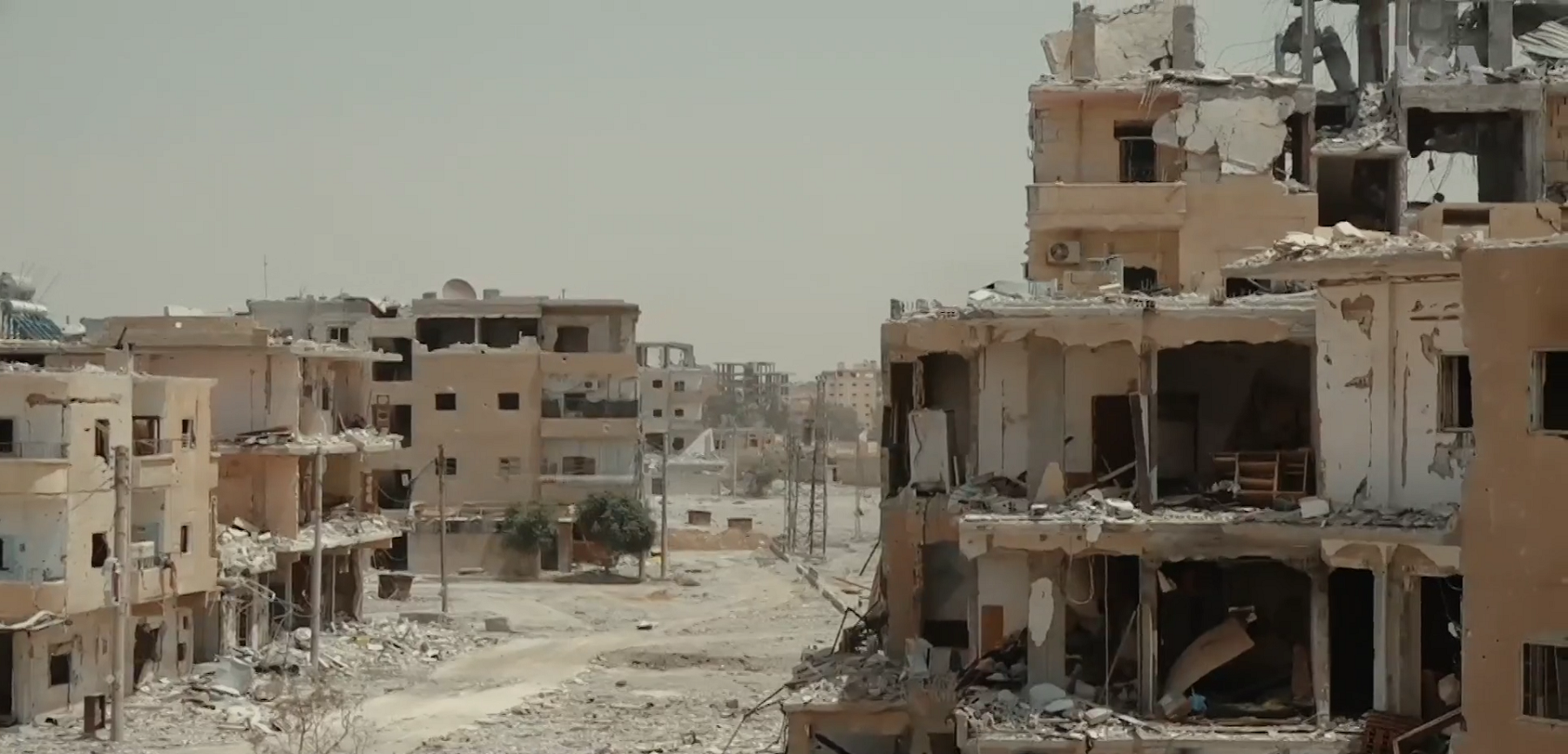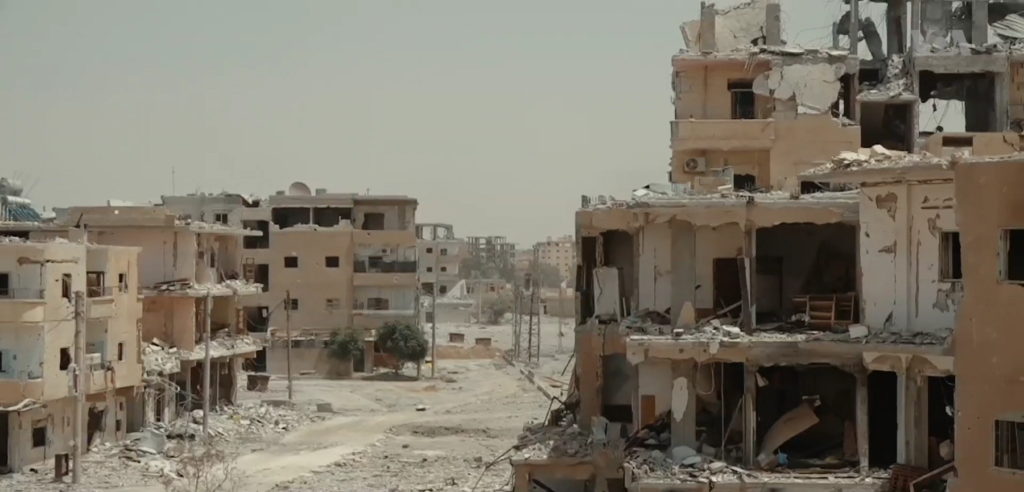The Space of the Islamic State

ISIL is one of the first terrorist groups to proclaim itself a state and has in many ways been defined by its control of territory. This is the first article in a three-part series that will explore ISIL’s multifaceted and unique relationship with space, comparing it to other groups and examining potential ramifications for future strategies pursued by violent extremist organizations.
The Islamic State of Iraq and the Levant, or of Iraq and Syria (or al-Sham), or just the Islamic State, or Daesh – these are some of the more commonly-used names for the terrorist organization that has skyrocketed to infamy since 2013. Whatever name you pick (ISIL, for this series), all refer to a ‘state.’ And indeed, ISIL was until not too long ago an actual proto-state.
ISIL began to seize territory in Syria and Iraq in 2013, and formally declared itself a caliphate in June 2014. In the early days, the idea of an actual state was barely taken seriously, neither by the international community, nor by fellow terrorist groups. But at its height, ISIL controlled an area larger than Portugal or South Korea. This was not just empty desert, either – an estimated eight million individuals were governed by ISIL, and the group controlled major cities including Mosul and Raqqa.
In addition, ISIL claims a number of far-flung provinces, ‘wilayats,’ as part of the Islamic State. These are other terrorist groups who have been inspired by or pledged loyalty to ISIL, and stretch from West Africa to Southeast Asia.
This relation to territory is relatively unique. Few, if any, terrorist organisations have attained a comparable level of control over territory, and many have never wanted to, even seeing territorial control as something to avoid.
Many terrorist groups, including ISIL, take advantage of instability. Failed states, ungoverned areas, porous borders, and weak governments all provide forms of sanctuary and protection for terrorist groups. They allow groups to have secure headquarters, a stable center of various networks, and space to operate unbothered. Sanctuaries are a place for terrorist groups to hide.
ISIL, however, has taken advantage of instability in a different way. Instead of hiding their operations within the chaos of the Syrian civil war, the group has actively claimed land and implemented their form of governance.

Most other terrorist groups have avoided pushing for official territorial control, preferring de facto control over areas where they will be left alone. This provides protection from international actors by the de jure government which, though it might not like the terrorist group, also usually doesn’t want an international intervention. In claiming territory and making its ‘government’ as official as possible, ISIL has in fact opened itself up in a much greater way to pressure from the international community. Due to the brutal nature of the new government, the international community has acted with uncharacteristic unity and decision.
Nonetheless, ISIL has also benefited substantially from controlling territory. It underpins and legitimizes their claim as the only true Islamic caliphate, a major facet of propaganda and recruitment campaigns. ISIL’s media presence has been exponentially more successful than any other terrorist group, cultivating supporters and drawing recruits from all over the world. Having an actual territory ‘state’ has been key, not only for propaganda, but as a concrete destination for recruits to start their new lives.
ISIL’s proto-state in Syria and Iraq is not just a propaganda tool; it also serves as a network hub for a range of activities. As previously mentioned, most terrorist groups use their territory as a sanctuary and safe operating space. Still, these groups usually have extremely flat organizational structures and networks that enable flexible coordination, safeguard against decapitation-style attacks, and are usually easily transferred to new areas. ISIL, on the other hand, is able to expand – as seen in the acquisition of far-flung wilayets – but is much more centralized in its territorial hub than most other terrorist groups. The proto-state serves as a hub for international operations and propaganda and recruitment activities, in addition to functioning as a key facet of ISIL’s economic network, which relies heavily on resource extraction and taxing local populations.
ISIL’s territorial control has also differentiated its ideology from other Islamist terrorist groups. ISIL claims to represent the return of an authentic Ummah, a concept of the Islamic community as a nation that transcends modern states. ISIL calls all Muslims to reject other groups, states, and organizations, pledge allegiance to ISIL, and relocate to the new caliphate. This has resulted in an overwhelmingly broad definition of the enemy, and has distanced ISIL ideologically from others in the broader Islamist movement. ISIL’s brutal violence against non-Muslims and ‘false’ Muslims alike is unusual among Islamist terrorist groups, which usually avoid aggressively sectarian violence and targeting Muslim populations.
ISIL’s territorial gains in the Levant have been all but completely reversed. Various coalitions of the international community, shocked by the speed and violence of ISIL’s expansion, began anti-ISIL operations starting in mid-2014. Almost four years of airstrikes and coordinated military operations have essentially driven ISIL from its territory in Iraq and Syria, and ISIL lost its last urban holding in November 2017. Remaining ISIL forces are still fighting, but the remnants of the caliphate in the Levant are scattered along uninhabited borderlands of the Syrian Desert.
The loss of the territorial state is a major blow to ISIL, but this does not necessarily mean the end of the group’s organization, network, or operations. To survive, ISIL will have to adapt to new operational constraints, salvage networks, weather growing internal divisions, and potentially reformulate a brand integrally tied to territorial control.
This is not impossible. The group already began shifting its rhetoric away from the importance of territorial control as the loss of the ‘state’ became inevitable. ISIL still claims numerous overseas provinces and a massive online following, and has claimed international attacks just this month. And the loss of territory in the Levant opens up a risk of gains elsewhere, as adherents flee to new countries and foreign fighters return home.
Numerous terrorist groups have revitalized after a seeming defeat – including ISIL itself – and in some ways, the unique relationship the organization has with territory and space may make it easier for them to survive.
Julia Yingling is an Honours Political Science student at McGill University, studying security, geography, and international relations.
Edited by Phoebe Warren

